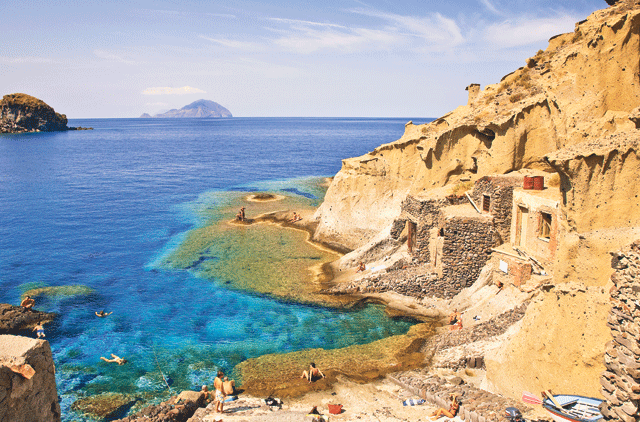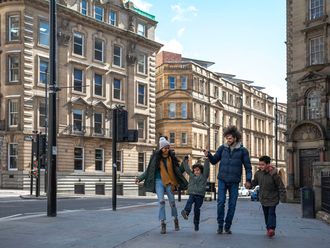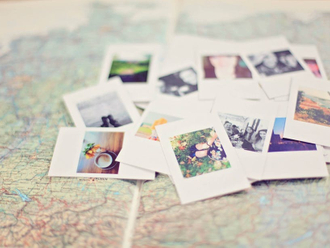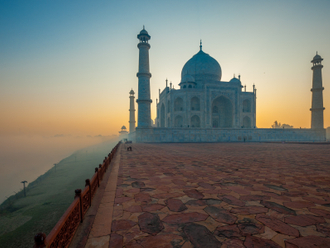
Nino the boatman traced the lumps and bumps of the island in the air with his hand before pivoting the boat towards a tumescent tower of volcanic rock several hundred metres out to sea. He executed a neat volte-face to resume our leisurely circumnavigation of the island.
Filicudi is a small island of nine square kilometres at the further reaches of the Aeolian archipelago which curves off the north-east coast of Sicily like a comet's tail. What is most remarkable about this place — apart from its beauty — is the emptiness. As we lounge at the front of the small wooden boat we spot the odd goat, a few houses dotted among the blooming broom and prickly pear trees, and the barest signs of human life in the island's two small ports. Despite being a mere hop from the party isle of Panarea, and Stromboli, summer home to Dolce and Gabbana, most of Filicudi is completely wild.
My sister Kate and I had arrived three days earlier, on the morning hydrofoil from the port of Milazzo in north-eastern Sicily, bleary-eyed and suffering from post-election exhaustion. In a fit of principled lunacy I stood for the Green Party in my home constituency of Chippenham, Wiltshire, expecting it to be an opportunity to put the environment on the agenda.
Tiresome journey
After the two-month campaign, Kate had taken stock of my frayed nerves, and said: "I'm taking you away the day after the election. No arguments; you're coming." I didn't ask where we were going — or how we would get there. So, after a sleepless election night followed by 16 hours of aircraft, train and ferry travel, that our landlady, Belquis Zahir, found us at the island's tiny port. Belquis, a beautiful Afghan architect, discovered Filicudi nine years ago and fell in love with its simplicity, she told us over coffee. She bought a ruin, did it up, and is in the process of finishing her second house, leaving the original available to rent, luckily for us.
Belquis House is a gem. As I opened the double gates into a courtyard at the end of a narrow track, my first impression was of cushions — long, flat ones to lie on, squashy ones on benches carved from the smooth walls, and soft ones lying plumped in a hammock strung between the arches of the terrace. Belquis showed us around and left us to sink into pillow-lined nooks, where we fell asleep.
It was only on waking, five hours later, as the Sun was starting to slink behind the walls, that I realised how perfectly peaceful it was, as if I had stepped through some portal into the inverse of election madness. Apart from the occasional caw of a seagull, I could hear nothing. I switched off my phone, unstrapped my watch and padded around the house and garden, stopping to sniff the lemon blossom and take in the view of assorted humpbacked islands. From the daybeds on the terrace to the shower fashioned from a converted bread oven, everything was beautiful, with a surprise twist.
Mule trails and a village
Feeling regenerated, on my first morning I set off for a run along the herb-lined mule tracks that criss-cross the island. The combination of Sun and incline proved a little challenging, so I pointed myself downhill and headed for the sea. The path ended in a tiny whitewashed village called Pecorini Mare, centred around a beach restaurant. I was greeted by a lady named Alina. Until recently, she and her husband had owned and run the place, called La Sirena. They were staying on to help during the season, after which they planned to open a beach-and-granita bar nearby.
Fresh favourite
I promised to bring Kate for lunch and heaved myself back up what seemed like a thousand steps to the house, returning a few hours later for the freshest and most delicious swordfish and fennel tartare, followed by tuna steak and tomato salad. La Sirena soon became a favourite.
Two days later, Nino ushered us on to one of his small wooden diving boats, and we started puttering along the coast towards the extraordinary basalt column known as La Canna and the clear waters of the Bue Marino (Sea Ox) cave. We dropped anchor in a little bay and Nino leapt on to the rocks with a knife, returning minutes later with a bowl full of long strands of pale green seaweed. "Spaghetti del mare. It's delicious." We grabbed handfuls, rejoicing in the flavour of the sea.
Capers grow wild all over the island, along with rainbow-hued flowers, herbs and fruit. Walking up the steep path after another excellent dinner at La Sirena, we brushed against wild fennel, mint and oregano. It was like a pathway of pesto.
We spent our days basking in the spring Sun, and walking. We traced the ancient mule tracks from the pink church at Valdichiesa, along to the ghost village of Zucco Grande. Then up to the summit of Fossa Felci, from where we could see the curve of islands: Stromboli, with its active volcano, Salina, Lipari, Panarea, Vulcano and, on its own at the tip of the comet's tail, Alicudi. When life gets too stressful in Filicudi, Alina told us with, I suspect, half a tongue in her cheek, one can always escape to Alicudi, where the population is under 150, and the only form of transport has long ears and kicks. After five days on Filicudi, it seemed like a fun idea.
Sailing into quiet beauty
We hopped on the morning hydrofoil, which acts as a bus between Sicily and all the outlying islands, and soon covered the 12 kilometres to Alicudi. The port was pretty, painted white and made Filicudi's port look like Manhattan. A handful of fishing boats were pulled up on the pebbly beach, above which the village appeared to be trickling down the steep slope. We bought provolone cheese and sweet cherry tomatoes from the shop and set off in the only direction there was: up.
We kept going, stopping to catch our breath and admire the flowers: red geraniums among purple morning glory, bougainvillea entwined between the giant ears of prickly pears. When we could go no further, we sat under a tree, gazing out to sea.
We coaxed our legs down the mountain in time for the evening hydrofoil. The sea was flat and sparkling, and a knot of people waited at Filicudi. As we stepped off the boat, several nodded their welcome. It wasn't exactly a ticker-tape parade but it sets us wondering; what if we keep coming back every year to this fecund and enchanted isle? After ten years, or more, would the port people start to accept us? Maybe not but it's worth a try.












